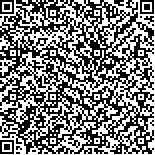| 摘要: |
| 符号学的跨学科研究动态使建筑符号
的“形—意”本原研究或可从早期人类以原始
神话思维为起点建立的“宇宙生成模型和时空
观念”出发进行源流推演性解读,找寻一种根
植于人类文化符号系统“形—意”同构的原型性
解释。本文从梳理形式符号原型研究的理论范
式出发,以甲骨文、金文出现的建筑类文字“宅、
空、室、楹、阑、坛、台”等为研究对象,以象形
文字字形特征的普遍解读方式结合建筑学本体
思考,阐释早期中国建筑在类型、形态上的发展
以及建筑符号象征表意功能传承实现的过程。
管窥建筑作为中国古代“崇天—通天”时空观念
象征符号的“能指与所指”,探析我国早期建筑
类型与形态发展中的文化隐喻与象征。 |
| 关键词: 原始思维 时空观 甲骨文字 符号 原
型 土木之功 |
| DOI:10.13791/j.cnki.hsfwest.20220320 |
| 分类号: |
| 基金项目:国家自然科学基金面上项目(51878083) |
|
| A Restricted View on the “Form-Meaning” of Early Chinese Architectural Characters fromthe Symbolization of Mythical Time and Space Concept |
|
HU Bin,WANG Pengcheng,CHEN Wei
|
| Abstract: |
| The interdisciplinary research dynamics of semiotics makes it necessary for the
original research on the “form-meaning” of architectural symbols to start from the “cosmic
generation model and the concept of time and space” established by early humans and based on
primitive mythological thinking, and to find a holistic explanation rooted in the “form-meaning”
isomorphism of human cultural symbol system. Among all the original ideas, the universe
generation model and the concept of time and space belong to the foundation and core of human
intellectual construction. By comparing the myths of various places, it is found that the cosmic
space configuration with chaos as the starting point, the “axis of the world connecting the three
realms” as the core, and the circular time consciousness with life “death resurrection” as the
main body have a universal influence on the construction of the cosmic space-time model by the
primitive people. They rely on the “creation origin” motif myth and the “heaven worship God
communication” ritual, which have been solidified and inherited from generation to generation,
and gradually precipitate into a collective unconsciousness. This article starts from combing
the theoretical paradigm of architectural symbol prototype research, takes the architectural
characters “house, empty, room, ying, column, altar, platform” and other hieroglyphs that
appear in oracle bone inscriptions and bronze inscriptions as the research object, and interprets
the characteristics of the hieroglyphic characters, and examines the process of inheritance and
realization of architectural types, form development and architectural symbols symbolizing
ideographic functions in the pre-Qin period. It seems that the rules of early architecture are also
related to and confirmed by human assumptions about the rules of the universe. Maybe they
are all subject to the primitive people’s design of “an original structure” of time and space, and
many forms created by human beings are only “different variations of a box of basic themes”.
From the perspective of mythology, ancient Chinese characters and architecture noumenon,
this paper attempts to provide a systematic and holistic research idea for explaining the formal
prototype and symbolic meaning of ancient Chinese architectural symbols. Under the condition
that the remains of early buildings are very scarce, this article demonstrates a restricted view
of the “signifier and signified” of architecture as the conceptual symbol of “worship and
communication of the gods” in ancient China, and explores the cultural metaphors and symbolsin the development of early architectural types and forms in our country. |
| Key words: Primitive Thinking Time-Space View Oracle-Bone Inscriptions Symbol Prototype Effect of Earth and Wood |


